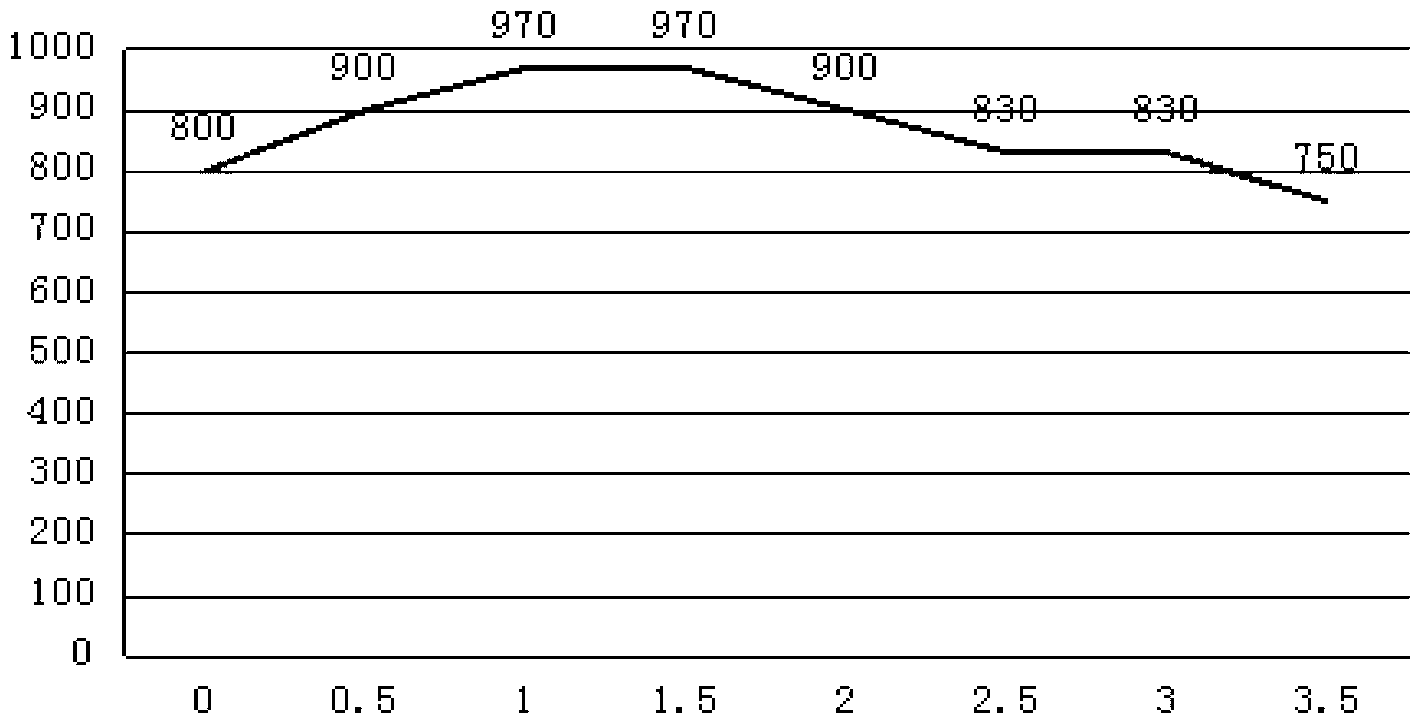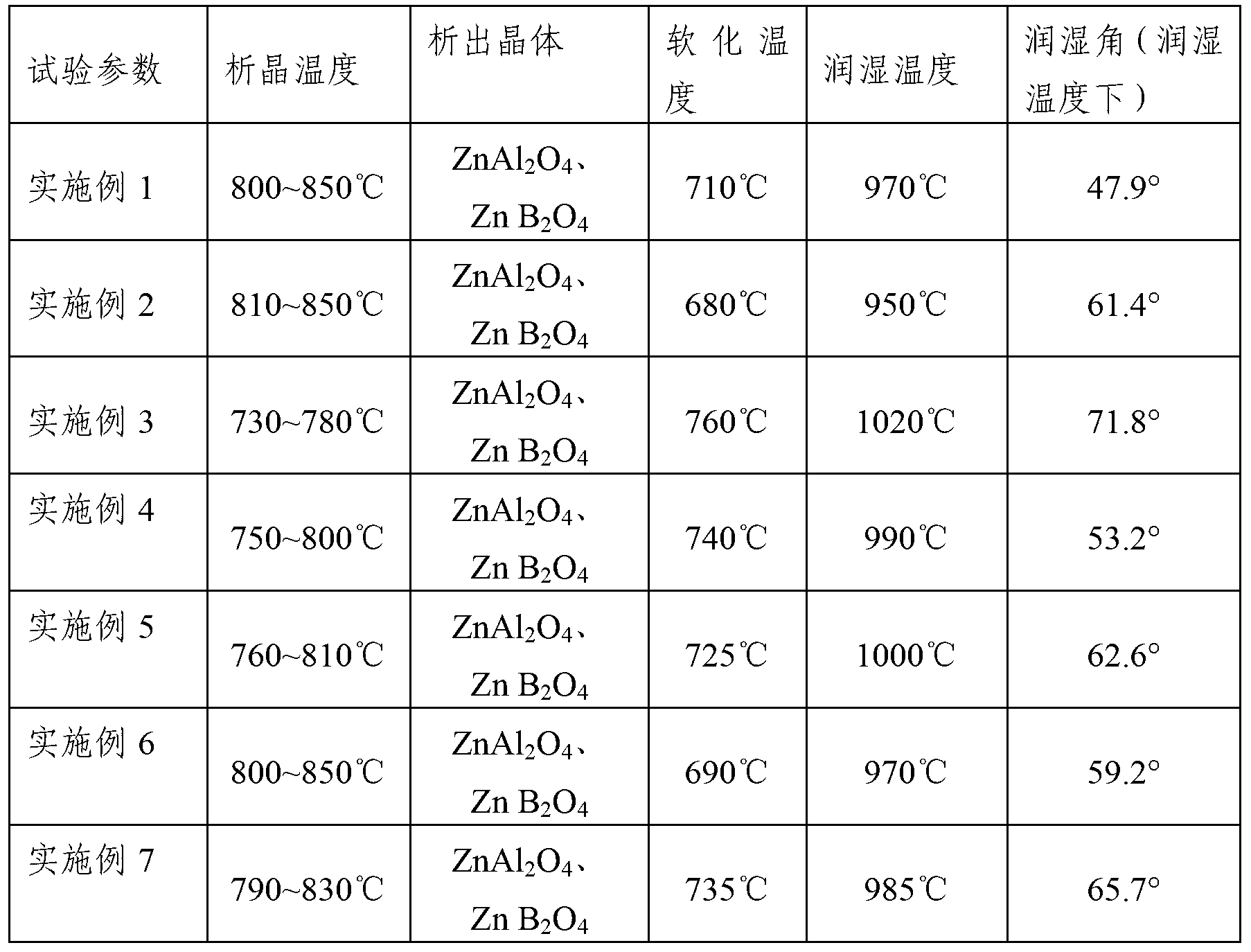Sealing microcrystalline glass, and sealing method and application thereof
A technology of glass-ceramics and glass, which is applied in the field of sealing metal shells of electronic components and sealing glass-ceramics, can solve problems such as less research or technology, and achieve simple process, excellent sealing performance, and dielectric loss electric shock The effect of high breakdown voltage
- Summary
- Abstract
- Description
- Claims
- Application Information
AI Technical Summary
Problems solved by technology
Method used
Image
Examples
Embodiment 1
[0050] The sealing process of embodiment 1 glass-ceramic is as follows:
[0051] (1) Mix the raw materials for sealing the glass-ceramics described in Example 1 in Table 1, add absolute ethanol, and ball mill until the raw material components are evenly mixed.
[0052] (2) Heat the material obtained in step (1) to about 1500°C and keep it warm for about 4 hours, then rapidly cool the obtained molten glass through a rolling mill (cooling rate is about 1200°C / s) and roll it to obtain a flake, The resulting flakes are then ground into glass powder with a particle size of 2-10 microns.
[0053] (3) Add about 5% by mass of PVA binder to the glass powder obtained in step (2) for granulation, and then make a glass green body.
[0054] (4) the glass green body obtained in step (3) according to figure 1 The dewaxing regime is shown for dewaxing.
[0055] (5) Put the dewaxed glass green body under the atmosphere of nitrogen protection according to figure 2 Sealing was performed usi...
Embodiment 2
[0057] The sealing process of embodiment 2 glass-ceramics is as follows:
[0058] (1) Mix the raw materials for sealing the glass-ceramics described in Example 2 in Table 1, add absolute ethanol, and ball mill until the raw material components are evenly mixed.
[0059] (2) Heat the material obtained in step (1) to about 1450°C and keep it warm for about 5 hours, then rapidly cool the obtained molten glass through a rolling mill (cooling rate is about 1150°C / s) and roll it to obtain a flake, The resulting flakes are then ground into glass powder with a particle size of 2-10 microns.
[0060] (3) Add about 5% by mass of PVA binder to the glass powder obtained in step (2) for granulation, and then make a glass green body.
[0061] (4) the glass green body obtained in step (3) according to figure 1 The dewaxing regime is shown for dewaxing.
[0062] (5) Put the dewaxed glass green body under the atmosphere of nitrogen protection according to figure 2 Sealing was performed us...
Embodiment 3
[0064] The sealing process of embodiment 3 glass-ceramics is as follows:
[0065] (1) Mix the raw materials for sealing the glass-ceramics described in Example 3 in Table 1, add absolute ethanol, and ball mill until the raw material components are evenly mixed.
[0066] (2) Heat the material obtained in step (1) to about 1550°C and keep it warm for about 3 hours, then rapidly cool the obtained molten glass through a rolling mill (cooling rate is about 1400°C / s) and roll to obtain flakes, The resulting flakes are then ground into glass powder with a particle size of 2-10 microns.
[0067] (3) Add about 5% by mass PEG binder to the glass powder obtained in step (2) for granulation, and then make a glass green body.
[0068] (4) the glass green body obtained in step (3) according to figure 1 The dewaxing regime is shown for dewaxing.
[0069] (5) Put the dewaxed glass green body under the atmosphere of nitrogen protection according to figure 2 Sealing was performed using the...
PUM
| Property | Measurement | Unit |
|---|---|---|
| Particle size | aaaaa | aaaaa |
Abstract
Description
Claims
Application Information
 Login to View More
Login to View More - R&D
- Intellectual Property
- Life Sciences
- Materials
- Tech Scout
- Unparalleled Data Quality
- Higher Quality Content
- 60% Fewer Hallucinations
Browse by: Latest US Patents, China's latest patents, Technical Efficacy Thesaurus, Application Domain, Technology Topic, Popular Technical Reports.
© 2025 PatSnap. All rights reserved.Legal|Privacy policy|Modern Slavery Act Transparency Statement|Sitemap|About US| Contact US: help@patsnap.com



